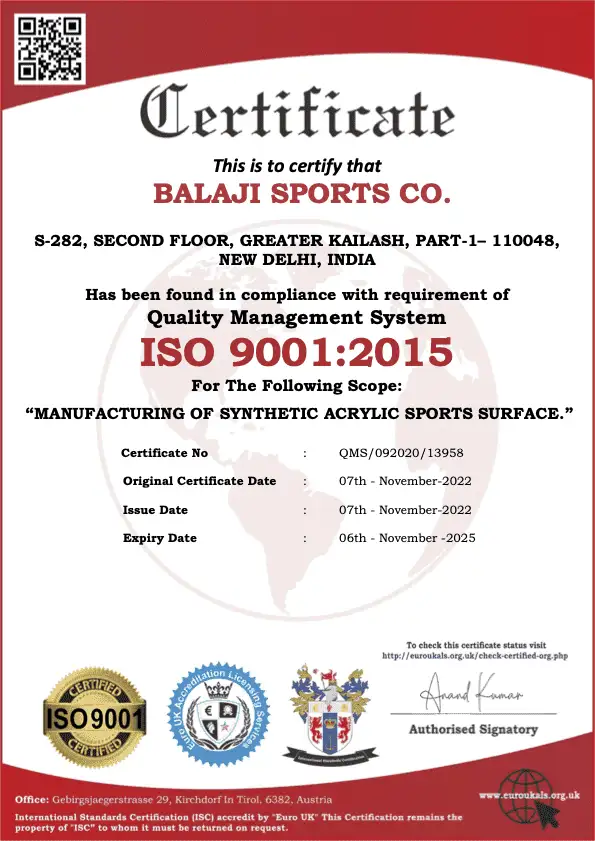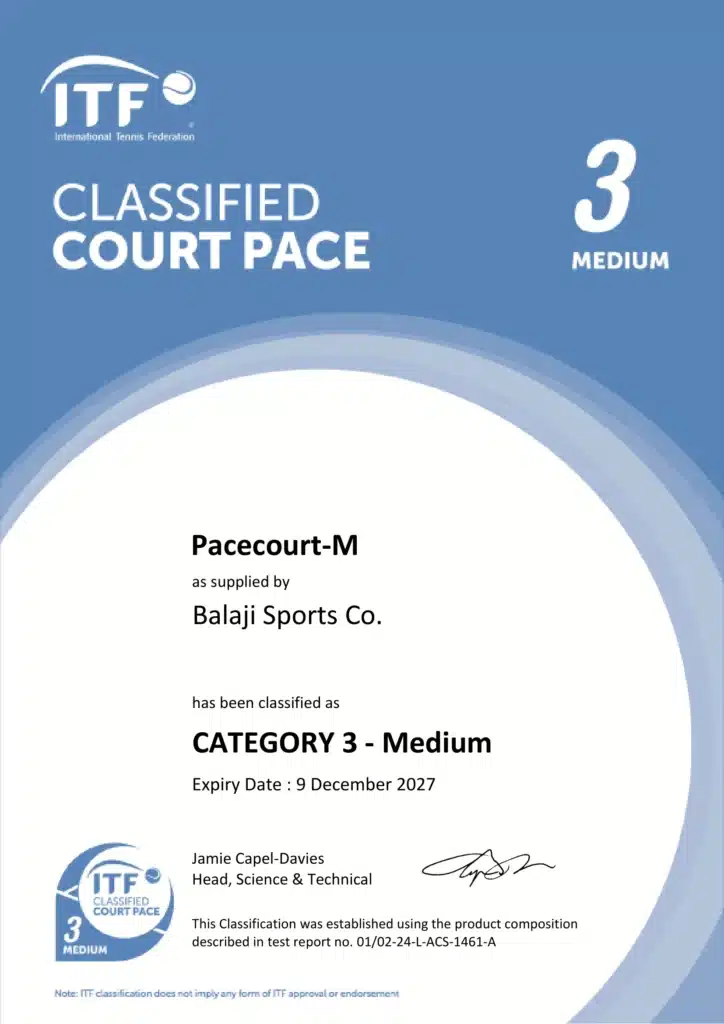Due to the increasing global importance of sustainability and environmental responsibility, all industries are reassessing their activities in a bid to make less impact on the environment. The sports flooring sector is not an exception as it embraces synthetic acrylic surfaces for outdoor courts that are popular and eco-aware. In this detailed article, we get to know about how bad these materials are on human habitat; the advantages thereof; the process through which such synthetic flooring material are made; and what role they play in society. To sum up it all, Pacecourt has been leading the way as far as the production of top-notch eco-friendly synthetic acrylic flooring material for over 11 years. Understanding Synthetic Acrylic Flooring Synthetic acrylic flooring has a wide range of applications and is used in different sports courts, including tennis, basketball, and badminton court flooring due to its durability. It comprises several layers that serve different functions and is laid on a well-prepared base such as concrete or asphalt/bitumen. Preparation of the base is the first step for building a synthetic acrylic court. It is possible to find two different types of base materials that are frequently utilized: Concrete Base: Concrete Primer: When selecting a concrete base layer, the initial component that should be placed is usually a primer for concrete. This coat provides a bond between the concrete and any other layer that might be on top of it. Acrylic Resurfacer: After the primer has been applied, a resurfacer made of acrylic is used to make an even and smooth surface while at the same time hiding small imperfections on the substrate. Cushion Court Layers: Then, several cushion court layers will applied. They made of acrylic resin tha combined with rubber particles making them comfortable for players and safe too since it absorbs impact and reduces strain on joints. Colour Coat Layers: The last layer is the topcoat, which provides both beauty and a better grip on the surface for playing purposes. This layer comes in an array of color to meet various likes and branding requirements. Bitumen Base: Acrylic Resurfacer: To start, the application of an acrylic resurfacer goes directly on a bitumen base since it does not need any primer. The resurfacer is responsible for creating a smooth and even surface. Cushion Coat Layers: Thereafter, the coating layers of cushions are put on, like on the concrete base, to increase players’ security and comfort. Color Coat Layers: The last stage may include applying the colour coat layers that will give it an appealing look besides enhancing traction. Sports courts can made attractive through synthetic acrylic flooring that has the lasting ability, high performance, and nice appearance as achieved via this systematic layering process. Environmental Benefits of Synthetic Acrylic Flooring Durability and Longevity Durability- one of the principal environmental advantages associated with synthetic acrylic floors. These floors can tolerate heavy usage and harsh weather, making them suitable for outside use. The strong acrylic surface has a long life span, hence, infrequently changing it. As a consequence, this long extended time calls for less raw materials and energy use in the manufacture of new floor coverings thus resulting in reduced effects on the surroundings. Long-lasting products require less maintenance throughout their lifespan; thus saving on both energy and other resources that would used on upkeep alone. In particular, this applies to outdoor areas since weather conditions as well as usage tend to wear out equipment quickly. Low Maintenance Requirements Unlike other sports surfaces, synthetic acrylic floors demand very little upkeep. Since they are smooth surfaces that do not absorb moisture, dirt, or dust, cleaning them is a breeze. To keep your outdoor tennis court looking great and working well, regularly sweep it and sometimes wash it with some gentle detergent. To this end, fewer chemical cleaners required as well as lesser amounts of water causing less harm to the environment. Synthetic acrylic flooring means less use of harsh chemicals as well as conserving water thus making a more sustainable court maintenance. Moreover, lesser maintenance activities lead to lesser energy consumption and lesser emissions related to transportation and cleaning devices. Eco-Friendly Materials Pacecourt’s synthetic acrylic flooring materials are with water-soluble qualities. Known to be environmentally friendly, they do not contain any dangerous solvents or volatile organic compounds (VOCs). For that reason, there has a reduction in the amount of harmful chemicals released into the air when they used and therefore improved air quality. Water-soluble acrylic resins even more manageable during application and handling thereby lowering the chances of exposed to harmful elements when setting them up. In this eco-sensitive way, we ensure that our goods can conform to elevated eco-standards without losing performance attributes. Energy Efficiency in Production Synthetic acrylic flooring produced through many different stages such as mixing, coating curing, and packing. We at Pacecourt value energy-efficient manufacturing methods because they help us reduce our harm to the environment. Some of the methods that we employ include: using clean energy sources, streamlining our production process to minimize wastage Sustainable manufacturing is our commitment to guaranteeing high environmental standards for our sports flooring products without compromising excellent performance. We reduce the carbon footprint and assist in combating climate change by focusing on energy efficiency. Reduced Urban Heat Island Effect Synthetic acrylic flooring also helps in reducing the urban heat island phenomenon within the city’s boundaries where cities tend to observed with higher temperatures compared to rural regions beyond them. Traditional materials such as concrete and asphalt exacerbate this problem by attracting and holding heat. Acrylic flooring can have a positive impact on temperature management systems if you use lighter colors that reflect more sunlight and absorb less heat. Thus, it helps cool down surfaces and nearby areas. Consequently, this may lead to decreased air conditioning demands which result in an enhanced sense of comfort in metropolitan regions. Partnering for a Sustainable Future At Pacecourt, we understand that sustainability is something we all share the burden of. Although we do not directly engage in installation





